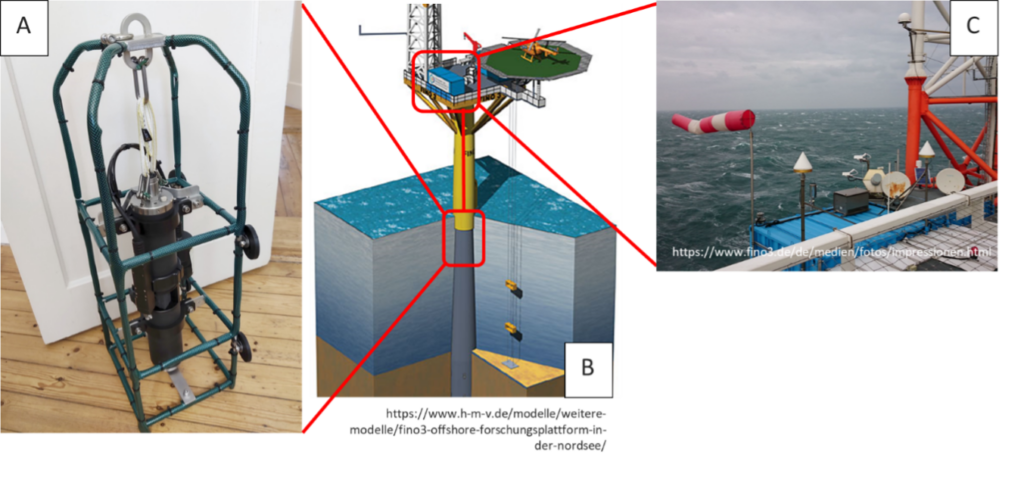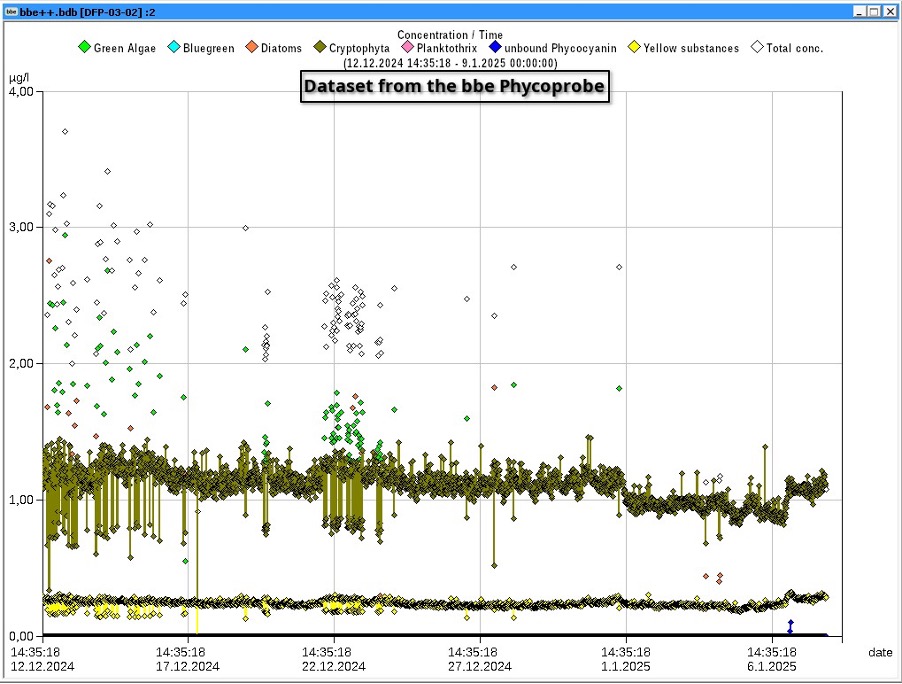Exciting Advancements at FINO3: Introducing the Phycoprobe
The technical team has successfully integrated a revolutionary sensor, the Phycoprobe, into the monopile structure of FINO3. This cutting-edge tool from bbe Moldaenke GmbH enables the classification of microalgae succession directly on-site and provides near real-time data through a satellite connection.
This development is a significant breakthrough, offering invaluable insights into potentially harmful microalgae blooms (HABs), which pose risks to mussel aquaculture. Our on-bottom oyster installation, detailed in our last post, could be affected by these blooms. HABs are becoming more frequent worldwide due to climate change and ocean eutrophication, leading to massive growths of microalgae. These blooms can form large floating “meadows” visible even from space and disrupt the delicate nutrient cycles in the marine environment.
Moreover, HABs can produce toxins that accumulate in shellfish like oysters and blue mussels, making them unsafe for consumption. The integration of remote monitoring and automated analysis through the Phycoprobe not only serves as an early warning system but also enhances our understanding of these complex ecological phenomena. Check our last update for more details on the impact of HABs on our aquaculture operations.
This proactive approach to monitoring and managing environmental factors highlights our commitment to sustainability and the health of marine ecosystems.

Figure 1: A: Phycoprobe prior to deployment (BBE Moldaenke GmbH) adapted to site-specific installation requirements. B: FINO3 scheme with the sensor’s approximate location, including the processing unit and necessary equipment to establish the satellite connection as indicated in C.

Figure 2: BBE Phycoprobe´s data output: thanks to the site-specific algae fingerprints, which were established by regularly providing sea surface water to the laboratory, the sensor is now able to distinguish between different microalgae classes such as Diatoms and Dinoflagellates and other substances, in quantities as low as 1 µg/l.

